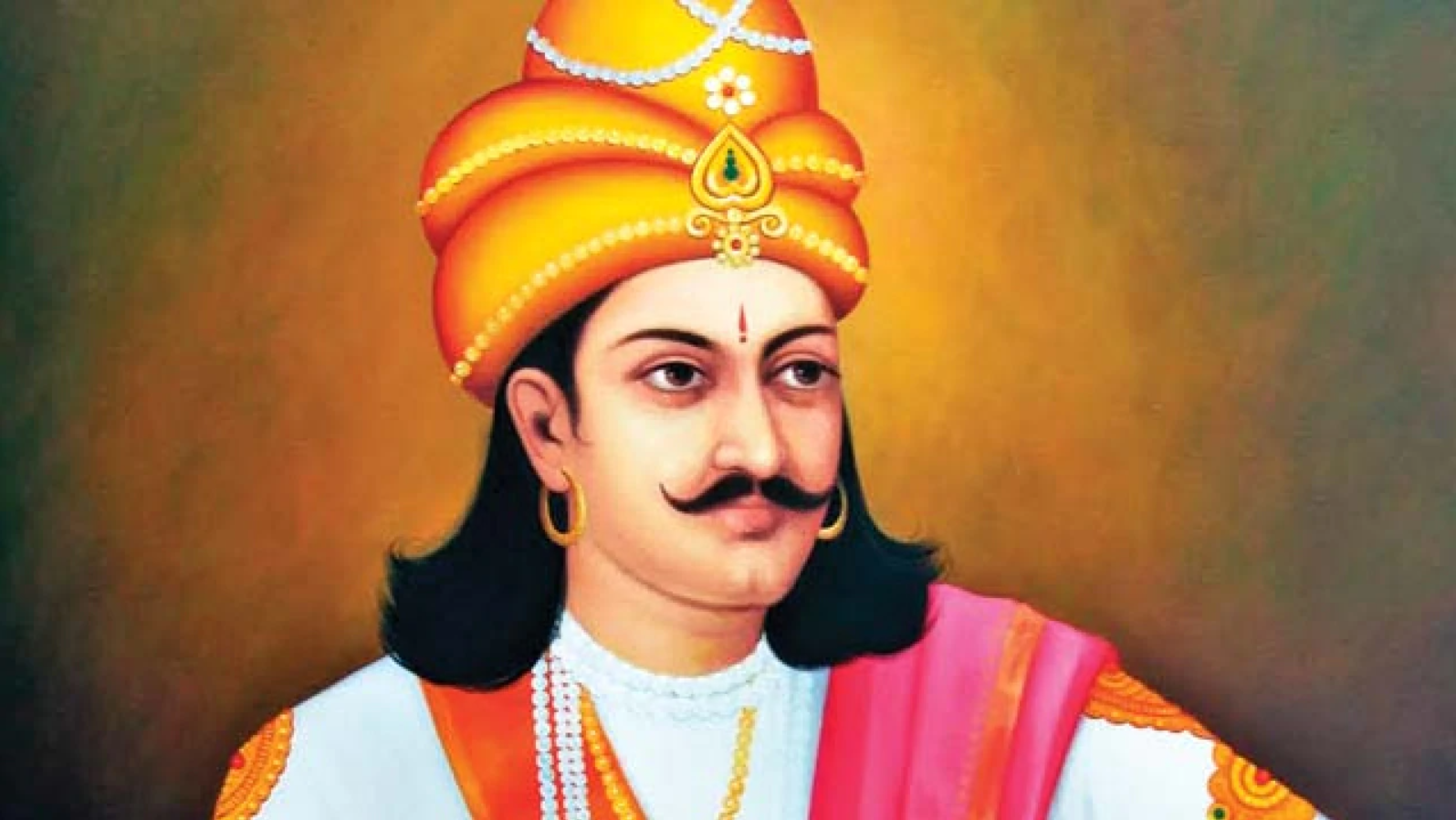Chandragupta Maurya was a great warrior, a wise ruler and the first true king the Indian Subcontinent had seen in ages. He laid the foundation of the Mauryan Empire that lasted a few generations in the Iron Age between 322 to 185 BCE. He was an orphan raised by the scholar Chanakya, into the first leader that reigned on almost the entire Indian subcontinent save for the South Indians.
An economic boom followed by an expansion into new territories and development of architecture, culture, law, public welfare and builds like mineshafts and roads with dedicated sewage systems and lighting. The Dynasty of Mauryans was long-lasting and prosperous. It was also secular. Chandragupta and (later on we’ll see) Ashoka promoted the Jain and Buddhist principles and inducted a large chunk of ancient Asia into these respective religions.
There are several Digambara Jain Folklore regarding the passing on of Chandragupta and how his successor Bindusar took the throne after him. Most of these remain anachronistic and are challenged by Indologists and Historians alike.
A good question here should be why are Chandragupta and Ashoka paired together as symbols of Mauryan power and not Ashoka and Bindusara, his immediate predecessor. It’s mostly because the grandiosity and scale of both the grandfather and grandson remained on par and Ashoka’s methodology and drive were similar to Chandragupta’s, just much more amplified.
Xuanzang was an adventurer and traveller from mainland China, he witnessed the imprint Ashoka left. Nine centuries after his reign ended in the 7th century AD the capital punishment he issued on criminals in his reign was still in effect. A prison he created called ‘Ashoka’s Hell’ where he ordered various atrocities and tortures on convicted criminals that often left them dead.
He ruled with wrath and absolute savagery for the early part of his reign, he was a fierce warrior who conquered even more territories than Chandragupta to expand the empire all the way from modern-day Afghanistan to Tamil Nadu in India. The iron rule was only expected of him given his reputation but even in his extreme mode of ruling he remained just and public opinion of him was positive.
A major shift in his ways and worldview came when Ashoka embarked on a journey to fulfill the gaps left in the empire by Chandragupta, Kalinga. A kingdom that remained autonomous and put up a resistance to the Great Ashoka as it had done to his predecessor, standing tall where today’s Odhisa is. The war started in 261 BCE as war drums thumped and bugles were blown.
Ashoka was bloodthirsty and driven. He wouldn’t stop at anything but complete submission on Kalinga’s part – if they wouldn’t bend their heads to his heels, off with their heads. The resulting war was the most brutal battle not only in India’s history but one of the worst bloodbaths the world had ever seen.
Kalinga fought with honour and bravery, losing in the process but never giving in. Ashoka was an able strategist and the strength of his army far surpassed Kalinga. They were obliterated and the fallen men ranged between three hundred and three hundred and fifty thousand. The aftermath of the war left even the strongest of wills in existential dread – Ashoka had regrets. He erected an edict that delved deep into his guilt for inflicting pain, suffering and death on hundreds of thousands of men, women and children.
He would get acquainted with the Buddhist concept of Dharma shortly after and upon deep self-reflection chose to renounce war for good. His initial inclination to Buddhist morals and religious tolerance later bloomed into a complete conversion to Buddhism. In these edicts, he mentioned religious tolerance and secularity and how the government should serve the people, and help the ones in need.
He commanded shelter and food to ascetic communities and to dig wells for the thirsty, roads for the travellers and temples for the priests. The public opinion of him shifted and some resistance to these edicts was witnessed. All sorts of rituals involving animal sacrifice, fishery, and wild game hunting along with the burning of chaff was now prohibited under the new law. This wasn’t just a major inconvenience for people, it was against the traditions they’d adhered to for ages.
Was Ashoka a true Buddhist? It seems questionable as it’s evident he continued to commit violence after his conversion for some time. He ordered a massacre of some eighteen thousand heretics for error on one’s part. The hell prison was still very active. Even his own brother Vitashoka was beheaded for being a heretic.
A reasonable assumption based on his own edicts and how they depict his life events hint at guilt and shell shock of war leading him into Buddhism as a coping mechanism. Buddhism also allowed him to bring more cohesion into his very diverse and equally divided state which was only banded together by years of blood spill and war.
Buddhist legends say, he donated every last possession in his name and most of his treasury to the Buddhist creed until his ministers prohibited him, he was severely ill although it’s not clear what brought the great one down, and unable to recover he finally met his demise in 232 BCE and his cremation pyre is said to have burned for seven days and seven nights.
Ashoka’s true intentions are well beyond comprehension and are up for debate, only his legacy remains. He was a true warrior to the end, a just and capable leader and the harbinger of peace and prosperity in India with his influence witnessed decades after he was gone in the entire world.

Leave a Reply